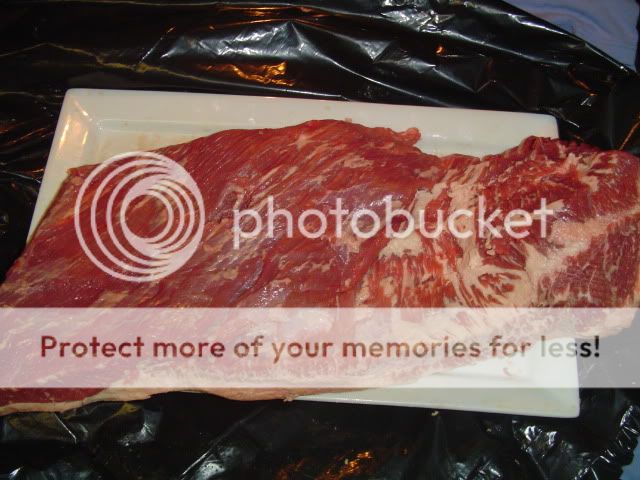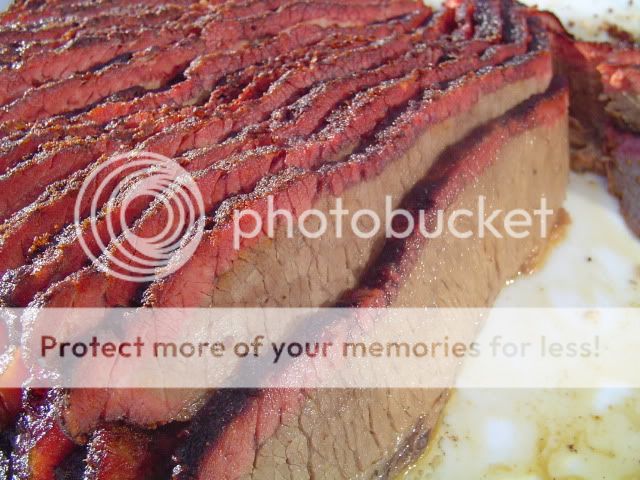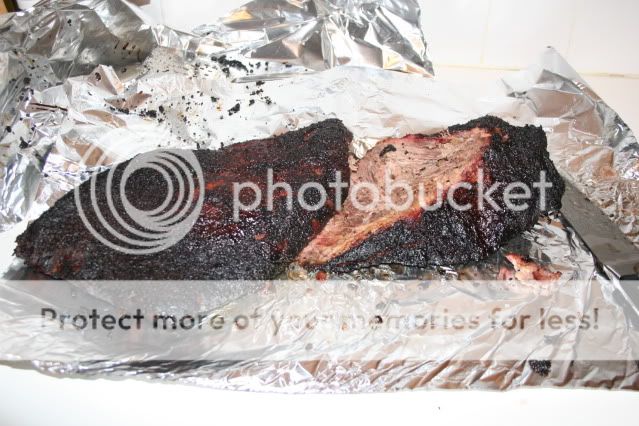ZILLA
is One Chatty Farker
That looks great!! So how hot and how fast?
If 275 degrees is considered "hot and fast", I guess I'm in that camp. That just seems to work great, foiling in the 160-170 range.
However, don't a lot of folks, including Myron Mixon, consider 350 degrees the "hot and fast" target temp? I've only tried it once that hot, and it was ok, but I think I'll stick to 275 unless someone can convince me that 350 is better. After all, that's roasting, then braising, and actually, I wouldn't be surprised if you could smoke a brisket at 275 and never foil with decent results... if it was a really good piece of beef and your pit cooked even and had good moisture.
Dave
UDS, wsm, wots, char-griller
I just realized how quick your 14.5 trimmed packer cooked! Five hours, at 275? Wow!
Every brisket I've ever cooked was more stubborn than that....that's FOR SURE. I started cooking briskets a little faster this way with DR. BBQ's method: In Ray Lampe's Shortcut Brisket recipe for a itty bitty 5-6 lb. flat, he says to cook at 275 for 3-4 hours until 160, then wrap in foil and start checking an hour later. That's a minimum of a four hour cook, for a piece of meat well less than half the weight and thickness you cooked! I've never cooked a flat that small, so I don't know if his time is right, but I just mention it for reference. He uses the same times for his Jalapeno brisket recipe, and I've never noticed any mistakes in the book before. Maybe someone will chime in, though.
Anyway, did you leave your probe in the flat while it was wrapped in foil on the cooker? I've done that, had it read 200 degrees and still be tough...can't go by temps while in the foil....but I guess it must've been tender enough. It looked pretty good.
Just curious as to the speed of the cook...I guess it could've been the magic of the UDS. I've been amazed at how fast I've gotten stuff done cooking directly above the coals, but then again, that's been when I flipped the meat ever so often.
Anyway, I think 275 is a fine temp to shoot for! I guess I'll start checking temps sooner.
Dave
UDS, wsm, wots, char-griller
I didn't really know what to expect since I had not cooked this way before.(intentionally) I typically do not use a temp probe for the meat. I used an instant read this time because I wanted to document what was happening. It was at 165 at the 3 hr mark which surprised me but I went with it and foiled. At the 5 hr mark, it was 200 and the probe went in like buttah so I pulled and rested. Again, I was surprised. The UDS definitely cooks faster than my offset. On a low and slow cook, the UDS trims 2-3 hours from what my offset takes with same meat and similar temps. I can't speak to the physics of it, I just try to adjust the techniques based on the smoker used. I do not flip briskets on the UDS nor do I mop. I put it on fat side down and leave it alone.
I have been on a good roll with briskets and had low & slow down on the UDS. I've been hesitant to try a hot and fast cook but I let my drum temps get out of whack superbowl weekend and salvaged a really good product so I decided to try it for real.
Started with a 14.5 lb full packer and I trimmed more fat than I normally do since it was going to be a faster cook:

My "in the drum" pics are on my phone. :icon_blush: I used plowboys bovine bold and ran the UDS at 275 center grate temp. At the 3 hour mark, the IT was 165. I foiled with a little broth. After 2 hours, the IT was at 200 so I pulled to rest. Rested 1 hr and this was the result:



I am very pleased. My "usual" process takes 13-15 hours. The bark is softer from foiling but I am very pleased with the flavor, appearance and tenderness. I actually remembered my new year's resolution and kept a log of the entire cook with hourly updates. Hopefully, I will be able to do this again.
Looks good enough to eat! Myron would be proud of the hot and fast cook.
Newbie question. Which part of the below cut would become the burnt ends? I hear y'all talking about them and I've seen pics after they're cooked but still unclear where they come from.
Which part of the below cut would become the burnt ends? I hear y'all talking about them and I've seen pics after they're cooked but still unclear where they come from.

